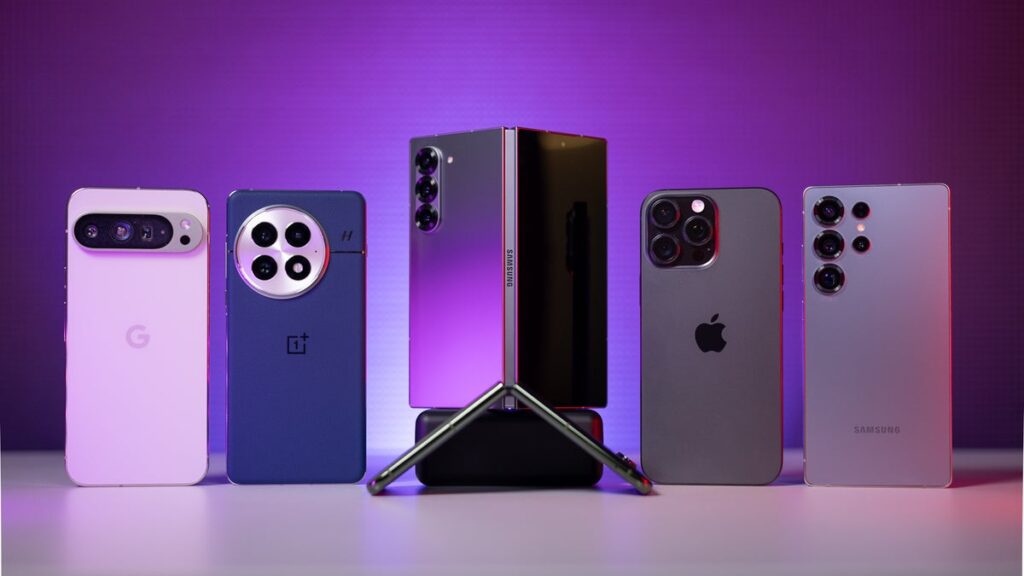Ever noticed how some budget phones boast flagship features? Let’s dive into the marketing whirlwind of smartphone branding and decode what it really means for us, the consumers.
Setting the Stage: The “Flagship” Enigma in Smartphone Branding
Okay, picture this: you’re browsing phone specs, and BAM!—another “flagship” phone pops up. The twist? It’s not the pricey powerhouse you’d expect. Nope, it’s pretty affordable. What’s the story here? Welcome to the wacky world of smartphone branding, where “flagship” gets tossed around like confetti at a parade—it’s enough to make your head spin!
Defining Flagship: A Smartphone Odyssey
Back in the day, flagship phones were King of the Hill—top dogs with the coolest tech and slickest style. Fast forward a bit, and the smartphone industry has jazzed things up. Companies like Xiaomi and Oppo are shaking the tree—slapping the “flagship” label on their wallet-friendly models.
This shifts the narrative. It’s not just about raw power or the hefty price tag anymore. Branding is all about the vibe now—making a gadget feel flagship-like, even if it’s not a peak performer on paper.
Spotlight on Xiaomi Poco M7 Pro 5G: The Flagship Façade
Take the Xiaomi Poco M7 Pro 5G, for instance. Advertised with flagship charm, but without the hefty bill. It struts its stuff with an IP64 rating—decent, sure, but not as resilient as the IP68 coats on its bulkier brethren. This, my friends, is marketing magic at work.
The Poco M7 Pro dazzles with a snazzy display and solid performance, aiming squarely at budget-conscious tech buffs. Scratch beneath the surface, though, and you might find the marketing doesn’t always match the grand promises.
Smartphone Marketing: Buyer Beware of Misdirection
Let’s address the elephant in the room: trust. If a company calls a duck a swan, we’ll feel pretty duped when it starts quacking, right? Sneaky smartphone marketing doesn’t just blur lines, it frays them—chipping away at brand trust faster than you can say “oops.”
Brands need to tread carefully, making sure what they promote jives with what they deliver, to keep consumers’ trust intact.
Decoding IP Ratings and Camera Specs: A Closer Look
Next on the docket: decoding those pesky IP ratings. IP64 vs. IP68—just numbers? Not quite. Think of IP64 as a raincoat and IP68 as a full-on diving suit. Both are handy, but understanding the difference is key, especially if your phone’s gonna face the elements.
And cameras? Not all about megapixels, folks. A budget phone’s megapixels might sound impressive, but the true flagships? They shine with sensor size, image processing magic, and slick software—making your snapshots pop like popcorn at a blockbuster.
Marketing’s Role in Shaping Perceptions: What’s in a Name?
Words wield power. And smartphone marketers? They’ve mastered this game. By blending cool tech terms with consumer-friendly speak, they craft perceptions like a potter shapes clay. The shift from hard features to abstract values has steered smartphone marketing’s new wave.
I fell into this trap once, snagging an “affordable flagship” only to find its Achilles’ heel during a beach trip—lesson learned the hard way (and a reason to double-check those claims!). Transparency isn’t just doing right by consumers; it’s a competitive edge. Companies embracing clarity might not just gain trust—they could lead the charge in consumer loyalty.
Wrapping Up: Transparency Equals Trust in Smartphone Branding
Here’s the lowdown: As phones evolve, so should brands’ dedication to clear, honest communication. Labels like “flagship” should align with consumer expectations, not just dazzle with allure. It’s about a transparent dialogue that builds lifelong brand loyalty.
For more insights on transparency’s power, check out this read from the American Marketing Association: Marketing Transparency.
Remember, a phone is more than just a gadget; it’s your daily sidekick. Choose wisely, folks!


